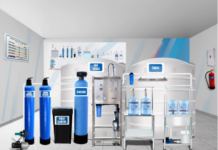Glass walls allow natural light inside. The office feels bright and airy. Workers enjoy a clear line of sight. The space seems larger than it is. Light spreads across every corner easily. Plants and decorations gain extra attention. So, offices feel alive and vibrant. Employees move freely without obstruction. The environment feels calm yet energetic. Partition for glass office help organize the space. The light supports focus and alertness. Shadows do not block vision anywhere. The overall effect promotes positive mood. People feel less confined or trapped. Therefore, glass walls improve both comfort and function.
Encouraging Collaboration
Teams often need open interaction for ideas. Glass walls let teams see each other. Conversations can start without formal invitation. Workers notice activity in other departments. Collaboration occurs naturally and often unexpectedly. So, ideas move faster than usual. Employees can approach colleagues easily. The office atmosphere becomes dynamic and flexible. Managers can monitor work subtly. Yet privacy can still remain intact. Glass surfaces reduce the sense of distance. Teams gain awareness of ongoing tasks. Social energy grows in the workspace. As a result, productivity benefits from connection. The open layout supports creativity in projects.
Maintaining Privacy
Privacy is essential even in open spaces. Frosted or tinted glass provides visual cover. Conversations remain confidential behind subtle panels. Noise reduction can accompany visual separation. Employees feel secure discussing sensitive matters. If work requires focus and calm, glass helps. The office design balances openness with boundaries. Managers respect the need for personal space. Private areas prevent unnecessary distractions and interruptions. Therefore, workers stay productive and concentrated. The walls create zones without feeling trapped. Transparent barriers maintain airiness while blocking eyes. Workstations achieve privacy without isolation. Teams can focus while staying aware of surroundings. Glass walls blend visibility with discretion perfectly.
Flexibility in Design
Glass walls adapt to changing office needs. Partitions can move or reconfigure quickly. Offices adjust layout without heavy construction. So, growth or downsizing becomes manageable easily. Teams can expand without losing light access. Workspaces transform for meetings or presentations. Glass allows zones to change purpose smoothly. Modular design benefits productivity and comfort alike. If different projects need separation, panels help. Open planning works without sacrificing organization. Glass walls provide visual continuity throughout offices. The flexibility supports long-term operational efficiency. Therefore, investment in glass pays off over time. Designers can create both private and public areas. The office remains fresh and relevant continuously.
Sound and Visual Management
Noise control is important in open environments. Glass walls can absorb or block sound. Acoustic panels enhance privacy while keeping openness. So, employees avoid constant auditory disruption. Visual barriers reduce distractions without closing the area. Transparency gives the office a connected feeling. Workers can signal availability to peers easily. If concentration is required, privacy options exist. Noise and light control combine effectively in designs.
Conclusion
Open workspaces improve mood and engagement. Glass walls prevent feelings of confinement. So, employees feel safe and valued. Visibility of colleagues encourages teamwork subconsciously. The openness reduces stress and isolation. Transparency fosters trust between managers and teams. If boundaries are clear, anxiety does not increase. Workers feel less tension in bright spaces. Visual access strengthens social bonds subtly. The environment feels cooperative rather than competitive. People interact easily without pressure or fear. Glass walls create an atmosphere that inspires and motivates continuously. Office morale improves through simple architectural decisions.









